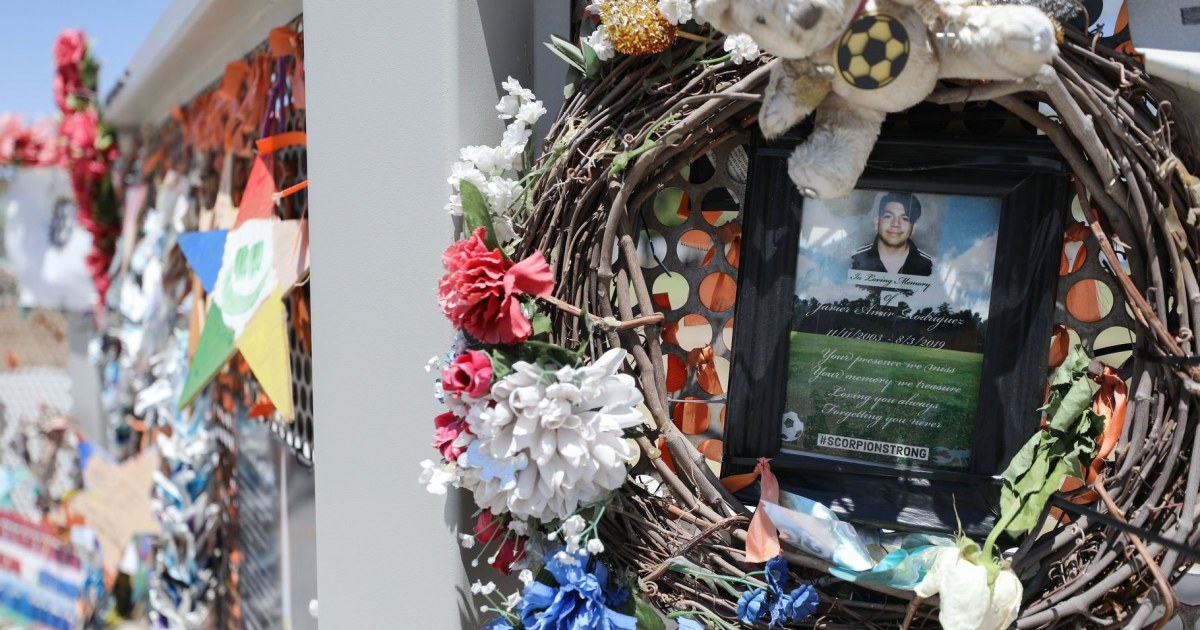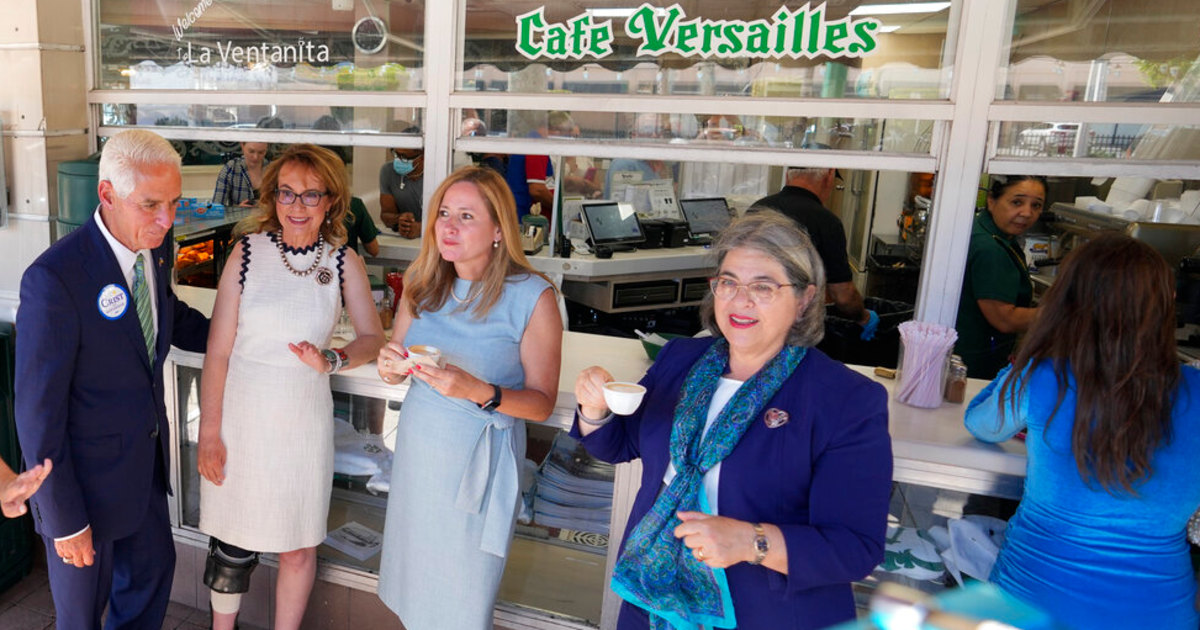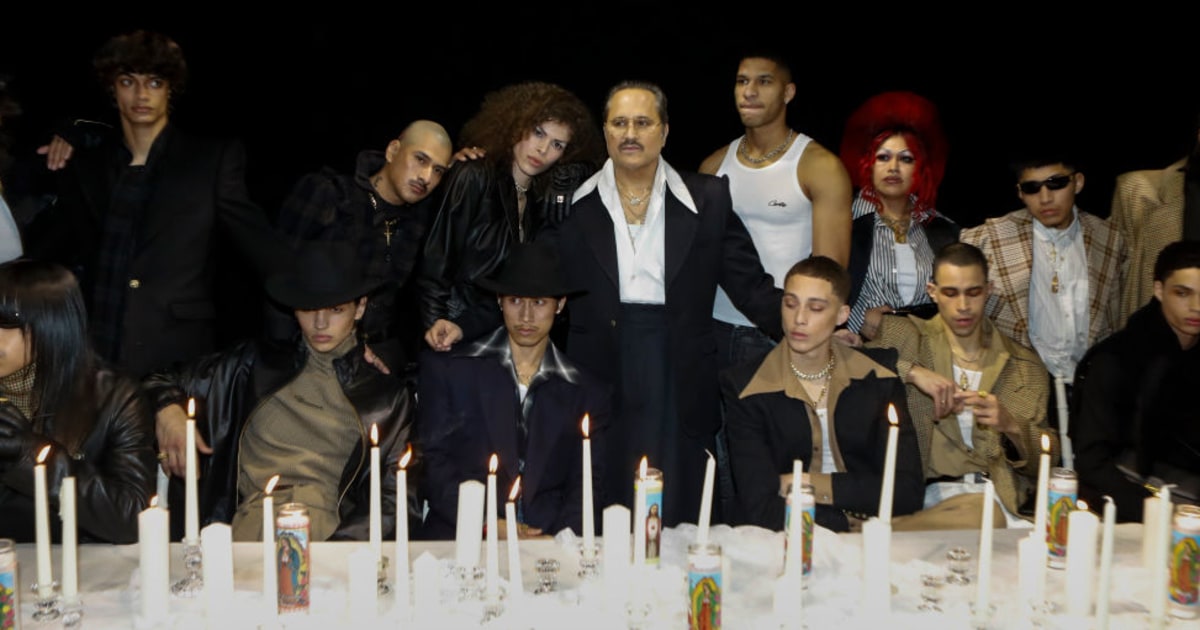Welcome to Axios Latino, a newsletter to tell you every Tuesday and Thursday the stories that have a special impact on Latino communities in the United States and in Latin America. If you are interested in subscribing and receiving the newsletter in your email (
in English
), you can do so
by clicking here
.
You will always find it in Spanish on Noticias Telemundo.
1 Topic: Divisions Among Latinos Around the Wall
Latinos of Mexican and Central American origins
strongly oppose more walls or fences being built along the U.S.-Mexico border, while most Cuban-Americans and some Puerto Ricans support the idea, according to a survey by Ipsos made in collaboration with Axios and Noticias Telemundo.
Why it matters
: The data makes clear the divisions by Latino sub-group in the United States, based on the stories and experiences of each.
While most Cuban-Americans have benefited from friendly Cold War-era policies, in general people of Mexican descent have been a more common and consistent target of mass deportation operations.
By the Numbers
: Overall, 58% of all Latinos surveyed said they opposed the border wall.
Broken down by ancestry, 73% of Latinos of Mexican origin said they are very or somewhat opposed to the border wall.
People of Mexican descent make up the majority (62%) of the US Latino population.
Approximately 54% of those surveyed of Cuban origin said they strongly or somewhat support a border wall or fence.
Meanwhile, nearly 45% of Puerto Ricans surveyed said they supported a wall or fence along the border.
Puerto Ricans have US citizenship and can move freely from the island to the mainland.
The poll also found that 72% of Central Americans surveyed oppose the wall;
Most of the migrants who have fled violence and poverty in recent years come from their region.
Yes, but
: 68% of Latinos surveyed said they support a path to citizenship for those in the country without legal status.
Support was just as strong among Latino subgroups.
Notable
: COVID-19 and gun violence were the top concerns of Latinos in the United States surveyed, according to the survey.
Immigration ranked sixth, behind climate change and supply chain issues and inflation.
2. Hispanics inaugurated the Christmas festivities in the United States.
Spanish settlers in what
is
now
Florida, Texas and New Mexico celebrated what historians considered the first Christmas events in territory that would become the United States.
More details
: Historians believe that Hernando de Soto, a dozen Catholic priests, and around 600 Spanish explorers celebrated the first North American Christmas in 1539.
They held a mass on December 25 in Anhaica, an Indian village now known as Tallahassee, Florida.
Spanish settlers also held the first recorded celebrations of this type in New Mexico in 1598, with masses on Christmas Day and on Christmas Eve.
In 1683, the Spanish explorer Juan Domínguez de Mendoza and the Catholic priest Nicolás López celebrated the first Christmas in Texas, a meeting with indigenous people in the city of Presidio.
Important note
: At the time, the Puritans and other Christian separatists who had settled in New England were opposed to any Christmas celebrations as they associated them with Catholics and the Church of England.
They passed laws prohibiting the observance of Christmas in the 17th century.
The festival would be officially celebrated in the region until about 200 years later, thanks to the arrival of Scandinavian, German and Irish immigrants.
Not to forget
: While many indigenous and Native Americans resisted against the forced conversions to Christianity and the Christmas celebrations of the Spanish settlers, some of those festivities ended up being incorporated and having syncretism with their traditions.
3. What's next in Chile with the youngest leader on the continent
Gabriel Boric, 35,
will become the youngest president in the Americas this March after his resounding victory in the second round of elections last Sunday.
Bottom line:
Boric, a student leader turned legislator, was propelled to La Moneda primarily by voters who participated in mass protests against inequality two years ago.
In general, he was voted by those who rejected that José Antonio Kast defended the Pinochet dictatorship and proposed critical social policies of LGBTQ rights or abortion, when Chile has taken great legal steps in favor of those issues.
Chile is one of the strongest economies in Latin America, although it also has one of the widest income gaps in the world.
Gabriel Boric holds his first meeting as president-elect of Chile with Sebastián Piñera
Dec. 21, 202101: 31
What's Next
: One of Boric's top priorities that has global implications revolves around its support for sustainable and green development.
With some of his policies, he could change the landscape of mining in Chile, which is the world's largest producer of copper and one of the largest of lithium.
Both materials are key to global supply chains and have become especially important for clean and renewable energy equipment.
Boric has suggested creating a state-owned lithium mining company and possibly charging more taxes to private copper mining companies.
The current Chilean Congress has been ahead of it, with debates on a law to increase royalties on copper and lithium.
In addition, the constitutional convention that is drafting a new constitution could also change the legislation on mining with global impacts on copper.
The president-elect's agenda also includes a reform of Chile's controversial pension and health systems, which protesters in 2019 accused of being burdensome and unfair, in part through higher taxes on the wealthiest.
Overview
: Recent elections in Chile, Honduras and Peru show a regional trend to the left.
In the coming months there will also be voting in Colombia, Brazil and Costa Rica.
4. Latinas suffer greater burnout.
But it can be prevented
Latino, Black, and Asian mothers
in the United States experience much more burnout from caregiving and job responsibilities, according to the largest survey of working parents to date.
Annelise Capossela / Axios
The Big Picture
: Last year the probability that a working woman, with or without children, would be severely exhausted was twice the probability for men, according to a report by the McKinsey firm.
Burnout was 47% more pronounced for black mothers, 33% higher for Asian mothers, and increased 23% for Latinas, according to the massive survey, conducted by the Great Place to Work group and the Maven Clinic for women's health.
Why it matters
: The pandemic drove women out of the workforce in greater numbers, putting additional burden on caring for their family members.
His exit from the workplace could undo decades of progress in equitable access to work.
Non-white women, who already faced institutional obstacles such as lower pay for a long time, had fewer opportunities to stay in their jobs.
Latinas had the steepest job opportunities of any demographic, according to the Latino Policy & Politics Initiative group at the University of California Los Angeles (UCLA) campus.
Yes, but
: The Great Place to Work report stresses that much of that burnout is preventable: female workers are less forced to quit if there are policies in their offices such as childcare subsidies, mental health telemedicine or flexibility to have non-running work schedules.
Bottom line
: Before the pandemic, the number of Latina workers in the US was projected to increase by 25% by 2029, almost 9 times more than non-Hispanic white workers.
Experts say that will no longer happen unless there are targeted interventions, especially since Hispanic women already spent twice as much time as Latino men doing housework and taking on caregiving responsibilities in addition to paid work.
Your abandonment of jobs in various industries is likely to have a significant impact on the US economy, according to the UCLA analysis.
5. Summary of key news in Latin America and the Caribbean
Guatemalan families held the first funerals
for the victims of a truck accident in Chiapas in which dozens of migrants were traveling on December 9.
With 55 lives lost and more than 100 injuries, it is one of the worst accidents of its kind.
This Sunday the remains of the first four deaths who were identified, for burials and wakes, arrived at their hometowns.
Many of the migrants who died in the accident remain unidentified in Mexican morgues.
“He was very loved in the town”: the victims of the truck that overturned in Chiapas are fired
Dec. 21, 202101: 41
Colombia has begun to implement a new
environmental
law
that allows the prosecution of people who cause deforestation, in addition to creating an anti-cyber crime unit to monitor that protected flora and fauna are not violated.
Three former members of the FARC guerrillas have already been accused of razing the jungle to plant coca leaves under the law.
Colombia has been the most dangerous countries for environmental defenders and activists as attacks against environmentalists in Latin America have increased in recent years.
6. 🦸♀️ They lead the fight
A wrestler, a folk dancer, and a teenage supernatural detective are among the Latina superheroines in self-published graphic novels that landed their creator an invitation to Comic-Con International.
More details
: Kayden Phoenix says she worked on the stories of the five superheroines because she saw very few people like her on the pages of the comics.
Phoenix was inspired by her Mexican grandmother and other members of her family to write the characters.
They have Puerto Rican, Cuban or Mexican origins, and they join forces to fight against problems such as femicides, adolescent suicide and injustice in ICE detention centers.
Phoenix worked with other Latino illustrators and visual artists for character design, colorization, and lettering and fonts.
This young woman creates Latina superheroines who fight against the social ills that affect Hispanics
Dec. 2, 202101: 50
The Big Picture:
In addition to Phoenix, independent creators like Edgardo Miranda Rodríguez have been making waves for the past five years with graphic novels focusing on Latin American superheroes and superheroes.
Latino and Latina characters have also been appearing in large print comics, often written by Latinos themselves.
And figures like Miles Morales's Spider-Man or the Puerto Rican Miss America (América Chávez) also making the leap from the pages to the big screen.
Some of those powerful characters have just joined forces in the
Communities
series
, released by Marvel later this year.
Thanks for reading to us this year, our first after the spring launch. We will be back on January 4th, happy holidays!
Do you want to see any of the most recent previous editions?
The Mexican behind Snoopy
The effects of the wage gap
Remember school segregation
The worst fears for 2022
How being discriminated against when renting worsens our health
The people behind the death toll at the border
Silencing Latino voices and books









